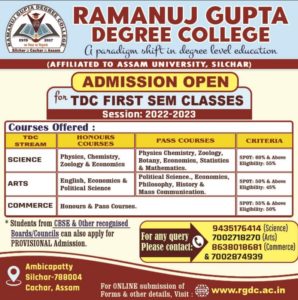India & World UpdatesHappeningsBreaking News
Connecting the dots between virus infection & progress of brain cancer

July 11: Scientists have found that cancer-causing virus Epstein Barr Virus (EBV) can infect the neuronal cells and drive various changes in biomolecules such as fatty acids, carbohydrates, and protein components, leading to diseases of the central nervous system as well as brain cancer.

 EBV virus has been found to be widely present in the human population. It usually does not cause any harm, but the virus gets reactivated inside the body in some unusual conditions like immunological stress or immunocompetence. This may further lead to various complications like a type of blood cancer called Burkitt’s lymphoma, stomach cancer, multiple sclerosis, and so on. Earlier studies provided links of EBV involvement in various neurodegenerative diseases. However, how this virus can affect the cells of brain and manipulate them is still unexplored.
EBV virus has been found to be widely present in the human population. It usually does not cause any harm, but the virus gets reactivated inside the body in some unusual conditions like immunological stress or immunocompetence. This may further lead to various complications like a type of blood cancer called Burkitt’s lymphoma, stomach cancer, multiple sclerosis, and so on. Earlier studies provided links of EBV involvement in various neurodegenerative diseases. However, how this virus can affect the cells of brain and manipulate them is still unexplored.
 A research team from IIT Indore utilized the Raman microspectroscopy technique, supported by the Department of Science and Technology (DST) under FIST scheme to explore the possible impacts of a cancer-causing virus on brain cells. The technique based on Raman Effect is a simple, cost-effective tool to find sensitive chemical changes in biological samples.
A research team from IIT Indore utilized the Raman microspectroscopy technique, supported by the Department of Science and Technology (DST) under FIST scheme to explore the possible impacts of a cancer-causing virus on brain cells. The technique based on Raman Effect is a simple, cost-effective tool to find sensitive chemical changes in biological samples.
 The study, published in the journal ACS Chemical Neuroscience, showed that there could be timely and gradual changes in various biomolecules in the neuronal cells under viral influence. Additionally, these changes were distinct when compared to the changes observed in other supportive brain cells (that is, astrocyte and microglia).
The study, published in the journal ACS Chemical Neuroscience, showed that there could be timely and gradual changes in various biomolecules in the neuronal cells under viral influence. Additionally, these changes were distinct when compared to the changes observed in other supportive brain cells (that is, astrocyte and microglia).
 The team consists of a group leader from Infection Bioengineering group at IIT Indore, Dr. Hem Chandra Jha, along with his students Omkar Indari, Shweta Jakhmola, and Meenakshi Kandpal in collaboration with the group leader of Material and Device Laboratory (Department of Physics), Professor Rajesh Kumar and team including Dr. Devesh K. Pathak and Ms. Manushree Tanwar found that some common biomolecular changes were observed at times in these cells. They observed that the lipid, cholesterol, proline, and glucose molecules increased in the cells under viral influence. These biomolecular entities could ultimately play pivotal roles in the viral usurpation of cells. Further, the study also provided insights into whether these biomolecular changes can be correlated to virus-associated impacts and linked to neurological complications.
The team consists of a group leader from Infection Bioengineering group at IIT Indore, Dr. Hem Chandra Jha, along with his students Omkar Indari, Shweta Jakhmola, and Meenakshi Kandpal in collaboration with the group leader of Material and Device Laboratory (Department of Physics), Professor Rajesh Kumar and team including Dr. Devesh K. Pathak and Ms. Manushree Tanwar found that some common biomolecular changes were observed at times in these cells. They observed that the lipid, cholesterol, proline, and glucose molecules increased in the cells under viral influence. These biomolecular entities could ultimately play pivotal roles in the viral usurpation of cells. Further, the study also provided insights into whether these biomolecular changes can be correlated to virus-associated impacts and linked to neurological complications.
 “The research work aids in the understanding of EBV-mediated biomolecular changes in the various compartments of the central nervous system leading to better understanding of nervous system diseases,” said Dr. Hem Chandra Jha.
“The research work aids in the understanding of EBV-mediated biomolecular changes in the various compartments of the central nervous system leading to better understanding of nervous system diseases,” said Dr. Hem Chandra Jha.
 Professor Rajesh Kumar pointed out that the study is also helpful in establishing the advantages of Raman microspectroscopy, a cost-effective and non-invasive technique, in carrying out studies on virus-associated cellular complications in clinical settings. It could provide an upper hand in analysing clinical samples in comparison to other techniques, which require advanced setups for studying the virus-associated changes in cells, tissues, and organs.
Professor Rajesh Kumar pointed out that the study is also helpful in establishing the advantages of Raman microspectroscopy, a cost-effective and non-invasive technique, in carrying out studies on virus-associated cellular complications in clinical settings. It could provide an upper hand in analysing clinical samples in comparison to other techniques, which require advanced setups for studying the virus-associated changes in cells, tissues, and organs.





